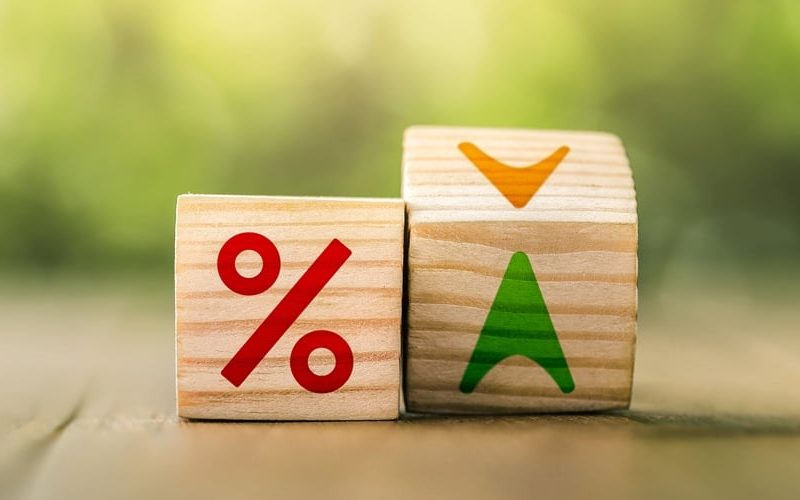Ever looked into student loans and gotten hit with all those terms like “fixed rate” and “variable rate”? It can feel overwhelming! Especially when it comes to variable rates, what is the danger of taking a variable rate loan? Are they good?
The truth is, variable rate loans can be a double-edged sword for college students. On the one hand, they sometimes start with a lower interest rate, which sounds good for your wallet. But on the other hand, that rate can go up in the future, which could mean you end up paying more in the long run.
This article will discuss the dangers of variable rate loans for college students. We’ll explain how they work, the risks involved, and why they might not be the best choice for everyone.
Table of contents
- What is a Variable Rate Loan?
- What is the interest rate on a variable-rate loan?
- What are the Dangers of Taking a Variable Rate Loan as a College Student?
- What can I do to Minimize my Risk when taking a Variable Rate Loan?
- FAQs About the Dangers of Taking a Variable Rate Loan as a College Student
- Conclusion
- References
- Recommendations
What is a Variable Rate Loan?
A variable-rate loan is a type of loan in which the interest rate can fluctuate over time. This means that the amount of money you owe on your loan may change from month to month, depending on the market’s performance.
The advantage of a variable rate loan is that it can be more affordable when interest rates are low. However, if interest rates rise, your monthly payments could become more expensive than a fixed-rate loan. That’s why it’s essential to consider all factors before deciding which type of loan is right for you.
It’s also worth noting that many lenders offer hybrid loans, which feature both fixed and variable rates. These loans typically start with a lower fixed rate and then switch to a variable rate after a certain period. Hybrid loans can be beneficial if you plan to pay off your debt quickly or don’t want to take on too much risk with an all-variable loan.
What is the interest rate on a variable-rate loan?
The interest rate on a variable-rate loan can vary greatly depending on the loan provider and the specific terms of the loan.
Generally, variable-rate loans have lower interest rates than fixed-rate loans, but they also come with more risk as the interest rate can change over time.
When you take out a variable-rate loan, it’s important to understand what factors may cause your interest rate to increase or decrease.
Many lenders tie their variable rates to an index like the Prime Rate or LIBOR, so your loan’s interest rate will follow suit if those rates go up or down. Factors like your credit score and repayment history may also affect your loan’s interest rate.
It’s always a good idea to shop around for different lenders when considering a variable-rate loan. This way, you can compare different offers and find one that works best for you.
Read Also: Top 20 Pet-Friendly Colleges in the World | 2024
What are the Dangers of Taking a Variable Rate Loan as a College Student?
A variable-rate loan is a type of loan in which the interest rate fluctuates over time, typically in response to changes in the market. Unlike a fixed-rate loan, which maintains a consistent interest rate throughout the loan term, a variable-rate loan can result in changing monthly payments.
This volatility in interest rates can introduce several dangers and challenges for college students. Let’s delve deeper into the specific dangers associated with variable-rate loans.
1. Financial Uncertainty
One of the primary dangers of taking a variable-rate loan as a college student is the uncertainty it introduces to your finances. With a fixed-rate loan, you know exactly how much you need to pay each month, allowing you to budget accordingly.
However, with a variable-rate loan, your monthly payments can vary, making planning and allocating your funds harder. This unpredictability can lead to stress and financial strain, especially if your budget is tight.
Read Also: Top 30 Colleges Not Requiring Covid Vaccine For Fall & Winter | 2024
2. Higher Interest Rates
Another significant danger of variable-rate loans is the potential for higher interest rates than fixed-rate loans. While variable-rate loans may start with lower initial rates, they are susceptible to market fluctuations, which can result in increased interest rates over time.
As a college student, dealing with higher interest rates can lead to more substantial loan repayments, making it harder to manage your debt and affecting your long-term financial goals.
3. Impact on Monthly Budget
Taking out a variable-rate loan can impact your monthly budget significantly. As the interest rates change, so do your monthly payments. If the rates increase, your monthly payments may also rise, leaving you with less disposable income to cover other essential expenses.
This can put a strain on your finances and potentially force you to make sacrifices in other areas of your life, such as reducing leisure activities or cutting back on necessary purchases.
4. Long-Term Financial Burden
Variable-rate loans can have a long-term impact on your financial well-being. With the possibility of increasing interest rates, the overall cost of your loan may rise substantially over time.
This can extend the repayment period and increase the total amount of interest you will pay. As a college student, this can create a burden that lasts beyond your graduation, affecting your ability to save, invest, or pursue other financial goals.
See this: Do Colleges Check Your Social Media? What You Need to Know
5. Difficulty in Planning for the Future
Taking on a variable-rate loan can make it challenging to plan for your future financial goals effectively. Uncertainty in loan payments can make it difficult to set aside funds for savings, investments, or other major life events.
It becomes harder to predict and manage your financial commitments when the interest rates on your loan can change at any time. This lack of stability can hinder your ability to make long-term financial plans and may even delay essential milestones in your life.
6. Stress and Anxiety
The financial uncertainties associated with variable-rate loans can lead to increased stress and anxiety. Not knowing how much you will have to pay each month or how the interest rates will affect your loan can create a constant sense of worry.
This added stress can negatively impact your mental health and overall well-being, potentially affecting your academic performance and personal relationships.
Read Also: 45 Gorgeous Dorm Room Ideas You’ll Want to Copy
What can I do to Minimize my Risk when taking a Variable Rate Loan?
When taking a variable-rate loan, it’s important to understand that the interest rate can fluctuate over time, potentially increasing your repayment obligations. However, there are steps you can take to minimize your risk and navigate the uncertainties associated with variable-rate loans. Here are some strategies to consider:
Research and Compare Lenders:
Start by researching different lenders and comparing their variable rate loan offerings. Look for lenders with a track record of stability and transparency in adjusting their interest rates. Consider factors such as the lender’s reputation, customer reviews, and the terms and conditions of the loan.
Understand the Terms and Conditions:
Thoroughly read and understand the terms and conditions of the loan before signing any agreements. Pay close attention to how often the interest rate can change, the specific index or benchmark used to determine the rate, and any caps or limits on interest rate adjustments.
Monitor Economic Indicators:
Stay informed about economic indicators that influence interest rates, such as inflation rates, central bank policies, and market trends. Monitoring these factors can give you an indication of potential changes in interest rates.
Read Also: What Happens During College Orientation? 2024 Guiding Tips
Create a Budget and Plan for Rate Increases:
Prepare a comprehensive budget that considers the possibility of interest rate increases. Calculate the impact of rate hikes on your monthly payments and ensure that you can afford the higher payments within your budget. Having a contingency plan in place will help you manage any unexpected changes.
Consider Rate Conversion Options:
Some variable-rate loans may offer the option to convert to a fixed rate at a later date. Evaluate whether this feature is available and assess the associated costs and benefits. Converting to a fixed rate can provide stability and protect you from future interest rate increases.
Make Extra Payments:
If possible, consider making extra payments toward your loan principal when interest rates are low. This can help you reduce the overall amount of interest you pay and potentially shorten the loan term.
Stay in Communication with Your Lender:
Maintain regular communication with your lender to stay updated on any changes to the loan terms or adjustments in interest rates. This will help you stay proactive and plan accordingly.
Seek Professional Advice:
If you’re unsure about the risks and implications of a variable-rate loan, consider seeking advice from a financial advisor or a loan specialist. They can provide personalized guidance based on your financial situation and help you make informed decisions.
Remember, while variable-rate loans carry a level of uncertainty, they can also offer advantages when interest rates are low. By researching, planning, and staying informed, you can minimize your risk and make the most informed decisions regarding your variable rate loan.
Read Also: What Is the Hardest A-level Subjects Existing | Top 10 In 2024
FAQs About the Dangers of Taking a Variable Rate Loan as a College Student
In some cases, it may be possible to refinance or consolidate your variable-rate loan into a fixed-rate loan. However, the availability and terms of such options depend on various factors, including your creditworthiness and the policies of the lending institution. It is advisable to consult with a financial advisor or loan specialist to explore your options.
Variable-rate loans do have their advantages, such as the potential for lower initial interest rates and the possibility of decreasing rates in the future. However, it is essential to weigh these benefits against the risks and consider your financial circumstances before making a decision.
To mitigate the dangers of variable rate loans, it is crucial to thoroughly research and understand the terms and conditions of the loan before signing any agreements.
Consider factors such as the loan’s interest rate caps, adjustment intervals, and the potential impact of rising rates on your monthly payments.
Additionally, having a solid financial plan in place, maintaining a good credit score, and exploring alternative loan options can help protect your financial well-being.
Yes, there are alternatives to variable-rate loans. Fixed-rate loans provide more stability in terms of monthly payments, making budgeting and financial planning more straightforward.
Additionally, scholarships, grants, part-time employment, and savings can help reduce the need for loans or lower the loan amount required.
Consulting a financial advisor is highly recommended before taking any significant financial step, including borrowing a variable-rate loan.
A financial advisor can help evaluate your financial situation, explain the potential risks and rewards of variable-rate loans, and guide you in making an informed decision that aligns with your long-term goals.
While variable-rate loans come with inherent risks, they may still be a viable option for some college students. If you have a solid understanding of the loan terms, are financially prepared for potential rate increases, and anticipate paying off the loan in a relatively short period, a variable-rate loan could work in your favor.
However, careful consideration and thorough analysis of your financial circumstances are crucial before opting for this type of loan.
Conclusion
Taking out a variable-rate loan as a college student carries significant dangers that can impact your financial stability and prospects.
The uncertainty of fluctuating interest rates, the potential for higher interest costs, and the strain on your monthly budget can create immense stress and financial burdens.
It is essential to consider the risks and benefits of variable rate loans carefully, exploring alternative options and consulting with financial professionals to make informed decisions.
By taking a proactive and cautious approach to borrowing, you can safeguard your financial well-being and work towards a brighter future.
References
- investopedia.com – Fixed and Variable Rate Loans: Which Is Better?
- collegeraptor.com – Is Choosing A Variable Interest Rate Worth The Risk?
- nerdwallet.com – Fixed vs Variable Mortgage Rate: How To Choose




